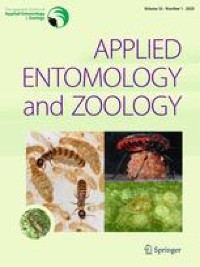Ortho Fire Ant Killer. Sprinkle it on the top and walk away. The workers will carry it inside the mound and they are dying within a few minutes.
Yes, but any of those type fire ant 'killers' uses acephate as it's active ingredient. Does it work? Yes, to some extent, but if you pay close attention in most every application you will find that within a few days what happens is that the colony just moves 8-12 feet away and begins a new mound. The old mound, if you dig down into a couple of days after application may have a few hundred dead ants but the colony was comprised of many thousands of ants. The dead ones are only a fraction of the colony and almost all male drones, which are expendable anyway.
The red imported fire ants (RIFA) we have here (
Solenopsis invicta ) have shown up in Japan and a Japanese research paper published in 2021 showed that 6 different pyrethroids worked pretty good in regards to
Toxicity with RIFA. In all,11 different insecticides were tested for toxicity.
6 quick-acting synthetic pyrethroids (transfluthrin, prallethrin, phenothrin, permethrin, metofluthrin, and pyrethrin).
5 newer-type insecticides (fipronil, thiamethoxam, indoxacarb, imidacloprid, and hydramethylnon)
(hydramethylnon is one of the 2 active ingredients in Extinguish. The other is S-methoprene)
All the insecticides in the research were obtained from Sigma-Aldrich (St. Louis, MO, USA). The results were listed 2 ways. LD50 (lethal Dose) meaning at least 50% of the ants were dead, and ED50, (Effective Dose) meaning that at least 50% of the test subjects were effectively rendered inhibited in movement or immobileand the results were posted in relation to time after exposure ( 12 hrs, 24 hours 72 hours etc..)
Of the older familiar insecticides they tested, Pyretherin was the best among the pyrethroids.
Among the newest, Fipronil seemed to be the most toxic to RIFA.
Surprisingly hydramethylnon was the least effective:
The LD50 values of hydramethylnon could not be estimated, because there were no fatalities even at the highest concentrations. No ants showed inhibition of movement or immobility at first observation (Fig. S2)
Some of the newer ones had an increased LD50 and ED50 after more elapsed time than in the short term.
I haven't looked but it may well be that some of the tested insecticides are not legal for use in the USA..I dunno.
You can read thru the report here:
The red imported fire ant Solenopsis invicta Buren (Hymenoptera: Formicidae), is a serious invasive alien ant around the world and has expanded its invasive range to the Pacific Rim since the early 2000s. It was first reported in Japan in 2017, and its entry through cargo has been reported...

link.springer.com
https://link.springer.com/article/10.1007/s13355-021-00728-8
